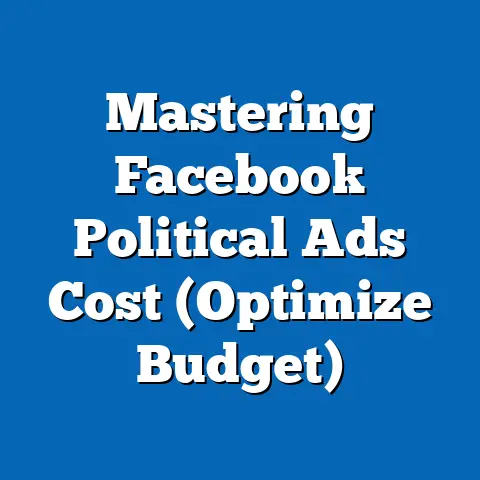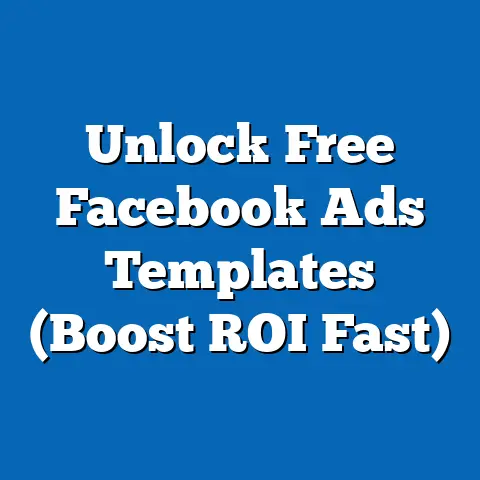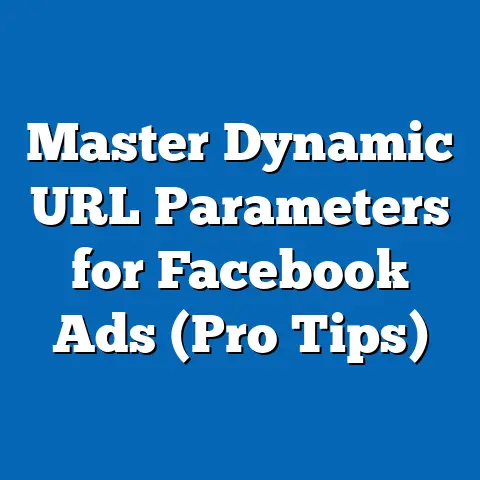Master Facebook Ads for Realtors (Proven Strategies)
Facebook. We all know it. We all use it. But are you, as a realtor, truly leveraging its power to connect with potential clients? In today’s digital age, where scrolling through social media has become a daily ritual, Facebook ads offer an incredibly simple and effective way for real estate professionals to reach a vast audience. I’ve seen countless realtors, initially hesitant about diving into the world of online advertising, completely transform their business by mastering Facebook ads.
Think about it: potential home buyers and sellers are already on Facebook, sharing their dreams, researching neighborhoods, and connecting with their communities. Why not meet them where they are? This article will serve as your straightforward guide to navigating the world of Facebook ads, providing you with proven strategies to attract clients, showcase properties, and ultimately, close more deals. We’ll break down the complexities into manageable steps, ensuring even the most tech-averse realtor can harness the power of Facebook advertising. Let’s get started!
Understanding the Facebook Ads Ecosystem
The Facebook Ads platform is a powerful tool that allows you to create and display advertisements to Facebook users based on their demographics, interests, behaviors, and more. But why is it so relevant to the real estate market? Simple: almost everyone is on Facebook. According to Statista, Facebook boasts billions of monthly active users, making it a prime location to find potential clients.
Unlike traditional advertising methods like newspaper ads or billboards, Facebook ads offer unparalleled targeting capabilities. You can pinpoint your ideal client based on factors like age, location, income, marital status, interests in home improvement, and even life events like getting married or having a baby. This precision ensures your ads are seen by the people most likely to be interested in your services.
There’s a smorgasbord of ad types available, each with its own strengths:
- Image Ads: These are the simplest form, featuring a single image with accompanying text. They’re great for showcasing a beautiful property photo and a concise message. I’ve found that high-quality, professional photos always perform best.
- Video Ads: Video is king in the digital world. Video ads can capture attention and tell a more compelling story about a property or your real estate expertise. Think virtual tours, client testimonials, or even just a quick introduction to yourself.
- Carousel Ads: These allow you to showcase multiple images or videos in a single ad, each with its own headline and link. They’re perfect for highlighting different aspects of a property or showcasing a portfolio of your successful listings.
- Slideshow Ads: Similar to video ads, slideshow ads combine multiple images into a visually engaging presentation. They’re a great way to create a dynamic ad without the need for video production.
The key takeaway here is that the Facebook Ads ecosystem offers a flexible and highly targeted way to reach potential clients in the real estate market. By understanding the different ad types and targeting capabilities, you can create campaigns that are both effective and efficient.
Next Steps: Take some time to explore the Facebook Ads Manager and familiarize yourself with the different ad types and targeting options.
Setting Up Your Facebook Ads Account
Okay, let’s get practical. Setting up your Facebook Ads account might seem daunting, but I assure you, it’s a straightforward process. Here’s a step-by-step guide to get you started:
- Create a Facebook Business Page: If you don’t already have one, create a Facebook Business Page for your real estate business. This is your digital storefront and where you’ll showcase your listings, share valuable content, and connect with potential clients.
- Access Ads Manager: From your Business Page, click on the “Ad Center” button on the left-hand side. Then, click “All Ads” and you’ll be taken to the Ads Manager. Alternatively, you can go directly to
business.facebook.comand select your Business Page. - Create an Ad Account: Within Ads Manager, you’ll need to create an ad account. This is where you’ll manage your campaigns, set your budget, and track your results.
- Add Payment Information: You’ll need to add a payment method to your ad account. Facebook accepts credit cards, debit cards, and PayPal. Make sure your billing information is accurate to avoid any issues with your ads.
- Define Your Business Information: Fill out all the necessary business information, including your business name, address, and website. This helps Facebook verify your account and ensure your ads are compliant with their policies.
Linking your Facebook Ads account to your Business Page is crucial. Your Business Page serves as the identity for your ads, allowing you to build brand awareness and establish credibility. Optimizing your page for real estate marketing is also important. This includes:
- Using a professional profile picture and cover photo: Showcase your branding and highlight your expertise.
- Filling out your “About” section completely: Tell potential clients who you are, what you do, and why they should choose you.
- Sharing valuable content regularly: Post listings, market updates, and helpful tips for buyers and sellers.
- Encouraging reviews from satisfied clients: Positive reviews can significantly boost your credibility and attract new clients.
During the setup process, pay close attention to these key settings:
- Ad Account Structure: Organize your ad account logically to make it easier to manage your campaigns. Consider structuring it based on different types of listings, target audiences, or marketing goals.
- Payment Methods: Ensure your payment method is up-to-date and that you have sufficient funds available to cover your ad spend.
- Business Information: Double-check that all your business information is accurate and complete. This helps Facebook verify your account and ensure your ads are compliant with their policies.
Next Steps: Take the time to set up your Facebook Ads account correctly and optimize your Business Page for real estate marketing. This will lay the foundation for successful ad campaigns.
Crafting Compelling Ad Content
This is where the magic happens! A well-crafted Facebook ad can stop someone mid-scroll and entice them to learn more about your listing or your services. Let’s break down the elements of a successful ad:
- Attention-Grabbing Headlines: Your headline is the first thing people will see, so make it count. Use strong verbs, create a sense of urgency, or ask a question that resonates with your target audience. For example, instead of “Beautiful Home for Sale,” try “Dream Home Awaits: Schedule Your Showing Today!”
- Engaging Visuals: High-quality images and videos are essential for showcasing properties. Use professional photos that highlight the best features of the home, such as the spacious living room, gourmet kitchen, or stunning backyard. For video ads, consider creating virtual tours or highlighting the neighborhood amenities.
- Clear Calls to Action (CTAs): Tell people exactly what you want them to do. Use clear and concise CTAs like “Learn More,” “Schedule a Showing,” “Contact Us,” or “Download Our Free Guide.”
When writing ad copy, focus on emotional triggers and the unique selling propositions (USPs) of the properties you’re advertising. What makes this property special? Is it the location, the amenities, the price, or the lifestyle it offers? Here are some tips:
- Speak to their desires: Instead of just listing features, focus on the benefits. For example, instead of “3 Bedrooms, 2 Bathrooms,” try “Enjoy Spacious Living and Comfortable Family Time in This 3-Bedroom Home.”
- Use storytelling: Paint a picture of what it’s like to live in the property. Describe the feeling of waking up to a beautiful view, enjoying a cozy evening by the fireplace, or entertaining friends and family in the backyard.
- Create a sense of urgency: Use phrases like “Limited Time Offer,” “Don’t Miss Out,” or “Schedule Your Showing Today” to encourage people to take action.
I always emphasize the importance of high-quality visuals. Blurry or poorly lit photos can turn potential clients away. Invest in professional photography to showcase your properties in the best possible light. Consider using drone photography to capture stunning aerial views. Also, ensure your images and videos are optimized for Facebook’s ad specifications to avoid any issues with quality or display.
Next Steps: Brainstorm compelling headlines, write engaging ad copy, and gather high-quality visuals for your Facebook ads. Remember to focus on the benefits and unique selling propositions of the properties you’re advertising.
Targeting and Audience Segmentation
This is where Facebook ads truly shine! The ability to target specific demographics, interests, and behaviors is what sets Facebook apart from traditional advertising methods. Let’s explore how to create custom audiences:
- Demographics: Target people based on age, gender, location, education, income, marital status, and more. For example, if you’re selling a luxury home, you might target high-income individuals in a specific geographic area.
- Interests: Target people based on their interests, hobbies, and activities. For example, you might target people interested in home improvement, gardening, or interior design.
- Behaviors: Target people based on their online behaviors, such as their purchase history, website visits, and engagement with Facebook pages. For example, you might target people who have recently visited real estate websites or expressed interest in buying a home.
Lookalike audiences are another powerful tool for expanding your reach. These audiences are created by Facebook based on the characteristics of your existing customers or website visitors. Facebook analyzes their demographics, interests, and behaviors to find other users who are similar.
Here are some examples of successful targeting strategies specifically for realtors:
- Geographic Targeting: Target people within a specific radius of the properties you’re advertising. This is especially effective for reaching local buyers and sellers.
- Interest-Based Targeting: Target people interested in specific neighborhoods, school districts, or amenities. This can help you reach people who are actively searching for properties in those areas.
- Life Event Targeting: Target people who have recently experienced a life event, such as getting married, having a baby, or getting a new job. These events often trigger a need for a new home.
I once worked with a realtor who was struggling to generate leads for a new development of townhomes. We created a Facebook ad campaign targeting first-time home buyers in the local area, focusing on the affordability and convenience of the townhomes. We also created a lookalike audience based on the realtor’s existing client base. The results were remarkable. Within a few weeks, the realtor was flooded with leads and had several townhomes under contract.
Next Steps: Define your ideal client and create custom audiences based on their demographics, interests, and behaviors. Experiment with lookalike audiences to expand your reach and find new potential clients.
Budgeting and Bidding Strategies
Setting a budget for your Facebook ads can feel like a guessing game, but it doesn’t have to be. Here are some guidelines to help you determine how much to spend:
- Daily vs. Lifetime Budgets: You can set a daily budget, which is the average amount you’re willing to spend each day, or a lifetime budget, which is the total amount you’re willing to spend over the entire duration of the campaign.
- Start Small and Scale Up: It’s always best to start with a smaller budget and gradually increase it as you see results. This allows you to test different ads and targeting options without risking a large amount of money.
- Consider Your Marketing Goals: Your budget should align with your marketing goals. If you’re looking to generate a large number of leads, you’ll need to allocate a larger budget than if you’re simply trying to build brand awareness.
Facebook offers several different bidding strategies:
- Cost-Per-Click (CPC): You pay each time someone clicks on your ad. This is a good option if you’re focused on driving traffic to your website or landing page.
- Cost-Per-Thousand-Impressions (CPM): You pay for every 1,000 times your ad is shown. This is a good option if you’re focused on building brand awareness.
- Cost-Per-Action (CPA): You pay only when someone takes a specific action, such as filling out a form or making a purchase. This is a good option if you’re focused on generating leads or sales.
A/B testing is crucial for optimizing your budget and bidding strategies. This involves creating multiple versions of your ad with different headlines, images, and targeting options, and then testing them against each other to see which performs best.
I always recommend running A/B tests to determine the most effective ads and optimize your budget accordingly. For example, you might test two different headlines, two different images, or two different targeting options. By analyzing the results, you can identify which ads are generating the most leads at the lowest cost.
Next Steps: Set a budget for your Facebook ads, choose a bidding strategy that aligns with your marketing goals, and start running A/B tests to optimize your campaigns.
Analyzing Ad Performance
Tracking and analyzing your ad performance is essential for ensuring you’re getting the most out of your Facebook ad spend. Here are some key performance indicators (KPIs) that realtors should monitor:
- Click-Through Rate (CTR): This is the percentage of people who see your ad and click on it. A high CTR indicates that your ad is relevant and engaging.
- Conversion Rate: This is the percentage of people who click on your ad and then take a desired action, such as filling out a form or scheduling a showing. A high conversion rate indicates that your landing page is effective.
- Engagement Metrics: These include likes, comments, and shares. High engagement metrics indicate that your ad is resonating with your target audience.
Facebook Ads Manager provides a wealth of data and insights into your ad performance. Use it to analyze your KPIs, identify trends, and make informed decisions about your ad strategies.
Interpreting data trends is key to optimizing your ad campaigns. For example, if you notice that your CTR is low, you might need to revise your headline or image. If you notice that your conversion rate is low, you might need to improve your landing page.
I once worked with a realtor who was seeing a high CTR on her Facebook ads but a low conversion rate on her landing page. After analyzing the data, we realized that the landing page was not relevant to the ad. We revised the landing page to better align with the ad’s message, and the conversion rate skyrocketed.
Next Steps: Familiarize yourself with Facebook Ads Manager and start tracking your KPIs. Analyze data trends and make adjustments to your ad strategies based on performance results.
Conclusion
Mastering Facebook ads can be a game-changer for realtors. By understanding the platform, crafting compelling ad content, targeting the right audience, setting a budget, and analyzing your performance, you can significantly enhance your marketing efforts and attract more clients.
I encourage you to take action by implementing the strategies outlined in this article. Start small, experiment with different ad types and targeting options, and track your results. Remember that the landscape of social media advertising is constantly evolving, so continuous learning and adaptation are essential.
With the right strategies and a commitment to continuous improvement, you can unlock the potential of Facebook ads and achieve remarkable success in the real estate industry. So, go out there, create some amazing ads, and start connecting with your future clients!






